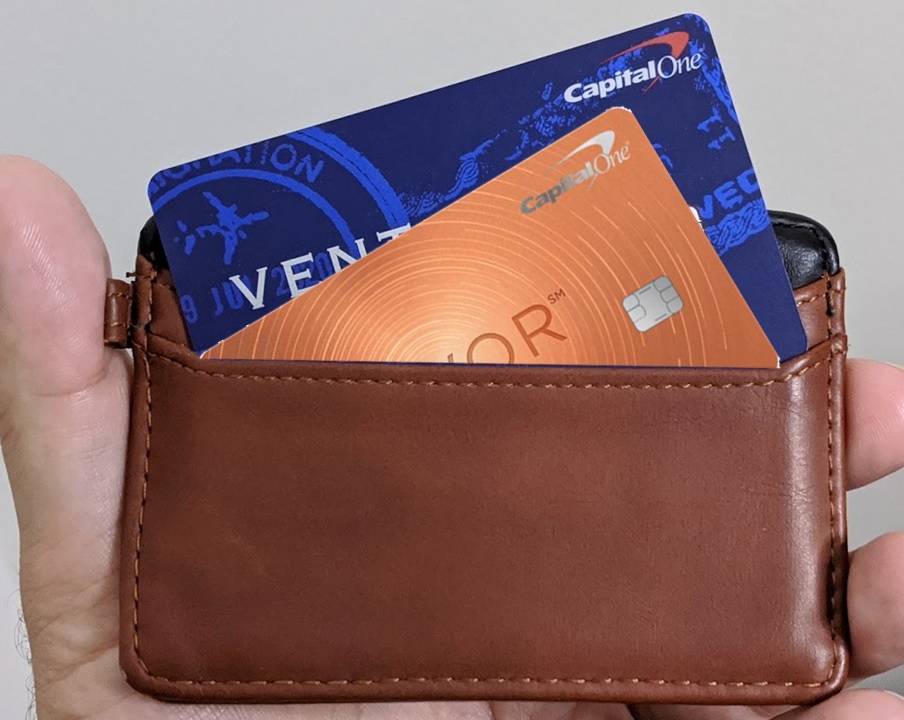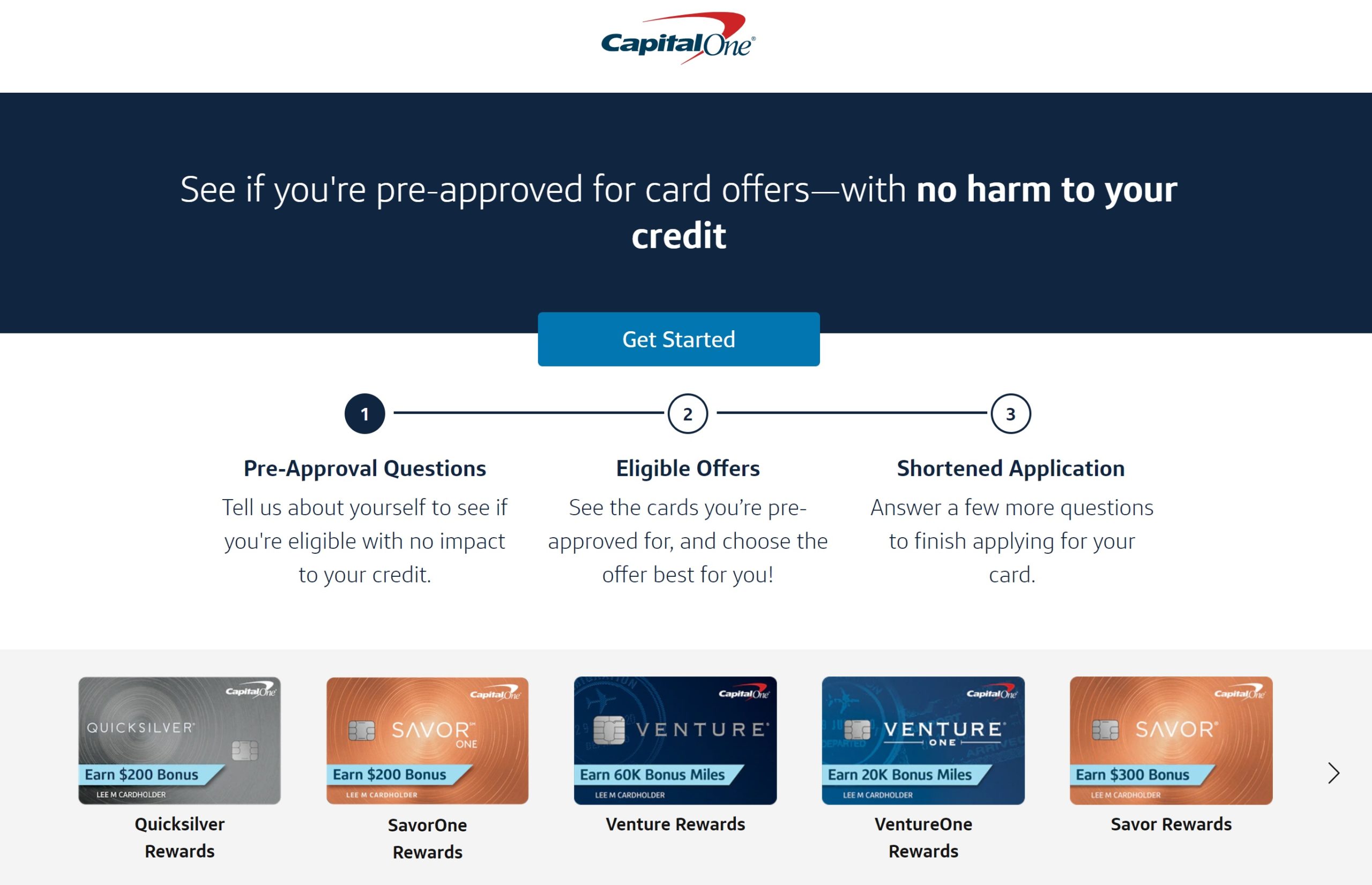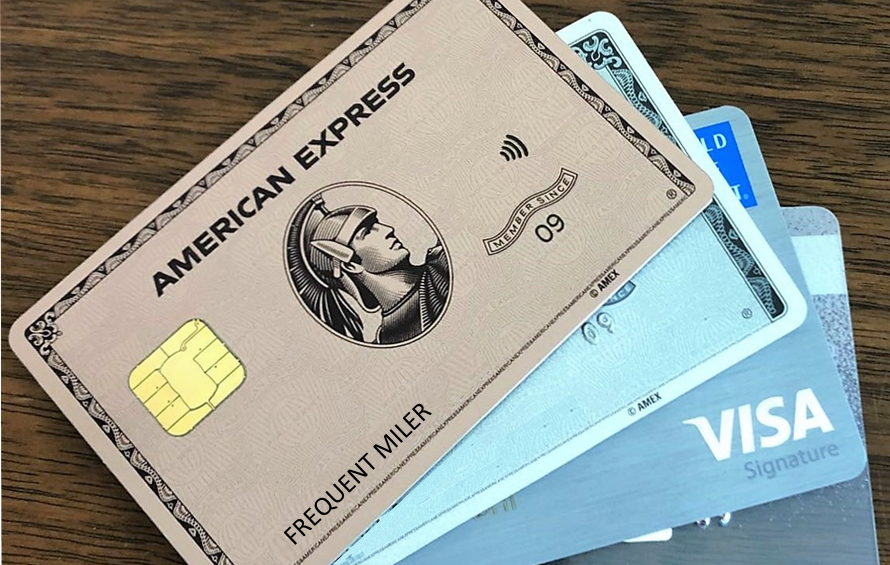On last night’s Ask Us Anything live event on Youtube, I was asked about the calculus behind a recent comment I made on a blog post where I questioned whether I should keep the Amex Gold card or get the Capital One SavorOne card. On air last night, I said that I hadn’t yet done the math, but that answer left me unsatisfied. As I sit down to write this post, I don’t know whether I should keep the Gold card or dump it for the SavorOne, but hopefully writing this will help me decide.

Key Details of the Amex Gold card

We’ve had an Amex Gold card in our household since the card was revamped several years ago. As a reminder, here are the key card details:
| Card Name w Details No Review (no offer) |
|---|
$325 Annual Fee Earning rate: 3X points for flights booked with airlines or on amextravel.com ✦ 4x points at US Supermarkets (up to $25K in purchases, then 1x) ✦ 4x at restaurants worldwide (up to $50k in purchases, then 1x) ✦ 1X points on other purchases. Terms apply. Card Info: Amex Pay Over Time Card issued by Amex. This card has no foreign currency conversion fees. Noteworthy perks: Up to $10 in statement credits monthly with participating dining partners (Goldbelly, Wine.com, Five Guys, Seamless/Grubhub, The Cheesecake Factory) ✦ $10 monthly Uber or Uber Eats credit (use it or lose it each month - must select Amex card as payment method to redeem) ✦ $7 monthly Dunkin' credit - enrollment required ✦ $50 twice-annual Resy credit ✦ $100 hotel credit on qualifying charges on stays of 2 nights or longer, plus a room upgrade upon arrival, if available with The Hotel Collection at americanexpress.com/hc ✦ Enrollment required for select benefits. |
Key Details of the Capital One SavorOne Card

The Capital One SavorOne Cash Rewards Card is billed as a cash back card. However, as we first reported a couple of years ago, it is possible to convert Capital One cash back rewards to Capital One Miles at a rate of $0.01 = 1 mile. In other words, 3% cash back categories could alternatively be 3x miles (or 2 miles + $0.01 or any way you’d like to split up your rewards).
Here are they key card details on the SavorOne card:
| Card Name w Details No Review (no offer) |
|---|
No Annual Fee Earning rate: 3% on dining, entertainment, select streaming services, and purchases at grocery stores (excluding superstores like Walmart® and Target®) ✦ 8% cash back on Capital One Entertainment purchases ✦ 5% on hotels and rental cars booked via Capital One Travel (terms apply) ✦ 1% everywhere else Base: 1% Dine: 3% Grocery: 3% Other: 3% Card Info: Mastercard issued by CapOne. This card has no foreign currency conversion fees. Noteworthy perks: No foreign transaction fees |
I should note that long-term, I prefer the SavorOne over the Savor. The Savor card is basically identical except that it offers 4% back on dining, entertainment, and select streaming services. The card’s $95 annual fee might sound like a small price to pay, but since it only offers an extra 1% cash back on those categories over the SavorOne, you would need to spend more than $9,500 per year in those categories to earn the extra $95 in cash back to offset the annual fee on the Savor card. If you spend more than $9500 per year on dining, entertainment, and select streaming services and you would put it all on the Savor card, that card certainly might make sense for you. Personally, I am unlikely to spend $9500 in those categories and further there will be times when I may use another card for purchases in those categories because of a temporary offer or because I am working toward minimum spend requirements for a welcome bonus. I think the SavorOne makes more sense from a long-term perspective.
Of course, long-term and up-front might be different stories: the Savor card’s welcome bonus gives you an opportunity to earn more up-front points, albeit for a lot more up-front spend. Still, it might make more sense to go for the slightly bigger Savor bonus and then hope to be able to downgrade to the SavorOne in the future.
Capital One pre-approval tool precipitated this debate

Before comparing cards, I should mention the fact that what led to this mental debate in the first place is that I occasionally play with card issuer pre-approval tools to see if they generate any interesting offers. They usually don’t — but then, who would know unless you check?
Capital One’s pre-approval tool is particularly poor in my opinion / experience. I have said in the past (and I’ll stand by it) that it is best used for entertainment value.
For instance, when the Venture X card first came out, my wife tried the Capital One pre-approval tool. The results were kind of comical: she was only pre-approved for a secured card. That’s the kind of credit card where you need to make a cash deposit with the issuer and that cash represents your credit line. That type of card is typically just for someone building or rebuilding credit. They did not pre-approve her for any credit cards at all (which, given Capital One’s general reluctance to approve people who have many credit cards, was not very surprising). However, the comedy of it is that she applied for the Venture X card anyway just moments after the preapproval tool said she could only be pre-approved for a secured card….and they instantly approved her for the Venture X with a $20,000 limit. Good thing she didn’t apply for that secured card I guess.
Like I said, entertainment value only.
Still, ever game for a little good ole fashioned entertainment, I recently gave the tool a whirl. Used to receiving only offers for secured cards or even nothing at all from the Capital One tool, I was taken aback when the pre-approval tool said that I was pre-approved for just about every rewards card Capital One offers — including the Savor and SavorOne cards.
Ever since discovering that Capital One cash back can be converted to miles, the Savor cards have seemed very appealing to me from an everyday workhorse perspective: these cards both offer uncapped 3% back on grocery and entertainment (which could alternatively be considered 3x if converted to miles) with the $95 annual fee Savor card offering 4% back on dining (which, similarly, could be considered 4x) versus 3% (or 3x) on the SavorOne, which has no annual fee.
However, I expected there was nearly zero chance that either of us would ever be approved for those cards. I had hoped for a product change, but we haven’t seen the ability to convert our other cards to a Savor card yet.
That made the preapproval pique my interest: perhaps I was wrong and we might be approved for a Savor card after all. But it wouldn’t currently fit anywhere in our wallets since we both currently have the Amex Gold card. Should we switch?
Arguments for the Gold card and how I see them

There are a lot of reasons to love the consumer Amex Gold card.
Those who regularly use UberEats and GrubHub (or one of the other qualifying uses of the other Gold card monthly credit) might see his card as feeling nearly fee-free — if you use all of the monthly credits, you can earn $240 in monthly statement credits per year, which sounds like a good rebate against the $250 annual fee at the time of writing.
Obviously the category bonuses are particularly appealing on the Gold card as well at 4x dining worldwide and 4x at U.S. Supermarkets on up to $25,000 in purchases per year (then 1x). The value of those category bonuses is fortified by what I would argue is a best-in-class set of airline transfer partners from Amex Membership Rewards. Amex gives you access to things like the incredible ANA round the world chart, ANA’s many sweet spots like 88K round trip business class to Europe or 75K low reason round trip business class to Japan (or 90K on Star Alliance partners!) and a lot more. You can transfer from Membership Rewards to book Delta with Virgin Atlantic miles (or Air France and KLM) or transfer to Aeroplan for some unreal award trips or to Avianca to hack your way to great prices or so many more programs. These are four valuable points per dollar.
And if you have the Schwab Platinum card, 4 points per dollar could otherwise be thought of as 4.4% cash back since Schwab Platinum cardholders can redeem points for brokerage deposits at a value of 1.1c per point.
Unfortunately, not all of those arguments convince me to choose Gold over SavorOne.
The Gold Card’s monthly credits are a mixed bag for me. Now that we have so many cards in our household that offer monthly Uber credits, we make an effort to use Uber at least once a month when we would otherwise pick up take-out for dinner. There are no delivery services in the town where we live, but we run a lot of errands in a city about 30 miles away that has some (limited) Uber Eats options. We usually end up picking up dinner at Panera or ordering delivery from Five Guys to the Five Guys parking lot (easiest Uber delivery ever for the driver since Five Guys doesn’t offer pick-up at our store). And when we travel, we almost always encounter a need that Uber Eats fits.
But I’d say that at least one month per year, we are either stretching to “use up” the Uber Eats credit or we might have missed using the credit altogether, so I’ll only value the Uber Eats credits at 80% of face value. That means I’ll value the $120 in monthly credits (at $10 per month) at $96. That might even be a bit generous.
The monthly GrubHub / Cheesecake Factory credits hardly ever get used in our household. There are no restaurants anywhere around us that use GrubHub and I never think to use GrubHub when we’re traveling mostly because I figure that only $10 in credit isn’t going to go very far for a family of four. My wife enjoys the Cheesecake Factory far more than I do, so if she happens to be in the vicinity of the closest location (about 70 miles away), she’ll pop in and buy a gift card. Yeah, that made for a “free” birthday lunch for me at the Cheesecake Factory this year — but did I mention that my wife likes it far more than I do? I’ll admit that the Brûléed French Toast on the Sunday Brunch menu is divine. If only we ever ate there on a Sunday.
Truthfully, I have a hard time assigning value to the GrubHub/Cheesecake/et al credit at all since we have used it so little and I’d have not otherwise have typically gone to the Cheesecake Factory, but I did eat something there just recently for no out of pocket cost, so I’ll give this benefit $25 in annual value. That puts me at $121 in value from the dining credits — still $129 short of the $250 annual fee.
If I then considered the “net” annual cost of the Amex Gold card to be $129, should I move over to the fee-free SavorOne?
Running the numbers

Setting aside our Reasonable Redemption Values for a moment, let’s set a base floor for each currency: rewards earned on the SavorOne card are worth $0.01 each as they can be redeemed for straight cash back. Rewards earned on the Gold card are only worth 0.6c per point taken as a statement credit if you only have the Gold card, but if you have a Schwab Platinum card you can redeem those points for 1.1c per point. That makes things a bit murky.
Let’s for a moment assume that I have a Schwab Platinum card and thus I consider each Amex point to be worth 1.1c per point.
In order for 4x Amex points at a $129 annual fee to be worth more than 3x Capital One miles with no annual fee, I would need to spend more than $9,214.29 on dining and at U.S. Supermarkets. That would earn me 36,857 points with Amex (worth $405.43 with the Schwab card) versus $276.43 cash back with Capital One (a difference of $129). That’s actually a lower threshold than I would have expected and I think I’d spend that much in those categories even without any effort at increasing spend.
However, I don’t personally have the Schwab Platinum card and for that comparison to hold up, one has to keep the Schwab card at a cost of $695 each year (Business Platinum cardholders can cash out points to an Amex Business Checking account at a value of $0.01 per point and I do have those, so the comparison point is close enough for me; further, my wife has a Schwab Platinum card).
In reality, since I’ll probably always have (or have the option to have) a way to cash out Amex points at a value of $0.01 or greater, and since I spend well over $10K per year between dining and U.S. Supermarkets, keeping the Gold card seems like the no-brainer decision.
But that ignores all of the nuance in the the relative values of the two currencies.
In reality, I value both currencies more highly than the base level comparison
I think it should be objectively clear that Capital One points are more valuable than pennies. A shiny penny in my pocket can only be a penny — no more and no less. A Capital One penny can be a shiny penny in my bank account or an airline mile or hotel point as I see fit. That easily makes those Capital One pennies worth more than the orange ones in my pocket because it gives me the power to cherry pick situations where I can get more value out of the points.
If you glance at our Transfer Partner Master List, you’ll notice that Capital One Miles and Amex Membership Rewards share a lot of partners. Many of the best sweet spots in award travel can be booked with points transferred from either program.
Amex does have a few partners that Capital One is missing: ANA, Hawaiian Airlines, JetBlue, and Hilton. Amex also features a far better 1:1.6 transfer ratio to AeroMexico. Of those, the only program that I think offers wide advantage is ANA — and that advantage is wide indeed. As mentioned further up in the post, ANA has many of my favorite award chart sweet spots.
But Capital One also has some options absent from Amex’s transfer partner stable: Finnair, TAP Air Portugal, Turkish Airlines, Le Club Accor, and Wyndham. Of these, the two most interesting are Turkish and Wyndham. I think Wyndham can be very interesting for Vacasa rentals like the one we enjoyed in Pigeon Forge a couple of years ago, though you could argue that Wyndham points go on sale for less than a penny a point now and then and thus could simply be purchased as needed. Turkish, however, offers some very real sweet spots (and very real frustrations). I don’t find Turkish to be as compelling a program as ANA on the whole, but there’s a compelling argument to be made for flights to Hawaii for 7,500 miles each way.
Our Reasonable Redemption Values currently figure that you can reasonably expect to redeem Amex points for 1.55c per point or better when transferred to partners and Capital One points at 1.45c per point or better. Given a 1 tenth of a penny difference in value when transferred to partners, the points are valued nearly identically.
If you subscribe to those Reasonable Redemption Values, the spending gap actually decreases for the break-even point. That’s because if you earn 4 points worth 1.55c each on the Amex Gold card, it’s like a return of “6.2%” (I put that in quotation marks because we are looking at the value you can reasonable expect to get when redeeming for an award, not straight cash value. Three Capital One miles at 1.45c is like a return of “4.35%”. The 1.85% difference means that I would be “ahead” with the gold card with a little less than $7,000 in spend each year.
Personally, I do really value the ANA sweet spots and so I probably do think of an Amex point as being more valuable than a Capital One Mile. However, ANA might not work well for you and you may be one of the many readers who has made out OK with the Turkish Miles & Smiles sweet spot to Hawaii. I think the value between the points is close.
But points are most valuable when you need more of them
But as I dug into the numbers, I came back to a realization that many of us have had at some point: points are infinitely more valuable as you are climbing toward a useful balance. There comes a point where you have “enough” of a particular currency and so the incremental value of each point added diminishes some.
And that’s the point I’m currently at with Amex: My wife and I have earned a lot of Amex points over the past couple of years and Amex just keeps marching along with the points parade with more targeted offers for Business Platinum and Gold cards and newly increased referral limits. The truth is that I have a lot of ways to earn a large quantity of Amex points.
I have fewer reasonable ways to earn a lot of Capital One points. That is in part due to the fact that the only spending category I have for a Capital One card is “everywhere else” spend at 2x. Having an uncapped bonus multiplier in a category where I have the capacity to spend quite a bit (grocery) feels like a potentially valuable add.
Furthermore, I’ve begun to amass a lot of annual fees. Dumping a $250 fee or two has some appeal in terms of simplifying and reducing costs.
There is finally my very rare but still-kicking ability to redeem Capital One miles at great value toward $900 Marriott gift cards. A reader recently reached out who just realized that their Player 2 has this capability. It’s so rare that it’s not worth a lot of ink — you can read more about it here. Since Marriott is the chain with which I am most likely to chase elite status this year, it makes some sense to me to have a way to earn toward those gift cards with increased efficiency.
Again, I probably wouldn’t feel that way if the Amex Gold Card were my primary workhorse for earning Amex Membership Rewards points. And even though it isn’t, the spending thresholds here to come out ahead with the Gold card are lower than I would have imagined. Given that U.S. Supermarkets can indeed be a highly useful bonus category, I do typically spend plenty there to justify the Gold card on paper.
And in reality, since I do have the capacity to spend quite a bit at grocery stores, maybe the question for me shouldn’t be which — maybe it should be both.
But is the SavorOne really worth a Chase 5/24 slot?
I’m sure that some readers will quickly say that the low welcome bonus available on the SavorOne card “isn’t worth a 5/24 slot”. That’s because Chase typically will not approve new card applications if you have opened 5 or more cards with any bank in the previous 24 months.
I’ve written before that I think people overvalue 5/24 slots, but that argument was based on the fact that there are far more valuable welcome bonuses available than those on some Chase cards. In this case, the welcome bonus is less valuable than those available on most Chase cards.
I therefore understand the argument that this card isn’t worth a 5/24 slot for most people. In my case, I have most of the Chase cards I want and a desire not to push the envelope too hard on new Chase applications. I’m fairly comfortable with my current ability to earn Chase points each year and so I’ve been hesitant to push as hard as some with new Chase applications. Your risk tolerance certainly may vary.
Because of that, I’ve been less focused on 5/24 than many. That doesn’t necessarily justify applying for the SavorOne, but it explains why I’m less averse to it anyway.
Bottom line
So should I dump the Gold card for a SavorOne? On paper, no, I shouldn’t. On the other hand, given my current Membership Rewards points balance and capacity to add to it in other ways, maybe I should. I don’t know that I’ve come to a clear answer, but at least for the time being I don’t feel compelled to get a SavorOne. I’m certainly interested and I wish that Capital One would make it easier to product change to the card you want. For the time being, I’ll probably stand pat — but if Capital One ever comes out with a more compelling offer on the SavorOne, I might revisit the card. And in the meantime, it’s certainly on my mind.





I got the SavorOne after reading this post, and it has mostly been good. But I’ve had a couple of transactions (both in Europe) appear on the statement as Grocery but only give 1% cash back. I called to ask about this, and they said the particular merchant code in those cases doesn’t allow for 3% cash back. When I asked how those merchant codes differ from the codes for the other transactions that appear on the statement as Grocery and do give me 3% cash back, they didn’t really have an answer. Is this something that commonly happens? The amount of money is small, but it irritates me to see “Grocery” on the statement and not get my promised 3%.
I loved this analysis and based on it I applied for the Savor One. I was approved and it arrived today. I do not have any immediate plans to dump my gold card just yet (I cancelled both personal and biz plats last month), but may eventually do so. Unlike anyone else I’ve ever read about, I need a card for the ENTERTAINMENT bonus spend. I used to get that with Citi Premier but they did away with that category a while back. I live alone and spend relatively little on groceries (no time for MS, so few gc purchases). I spend a fair amount on eating out but I spend a ton on entertainment. If Cap One is as bad as Citi was, a lot won’t code properly (I can’t tell you how many charges called things like “Alliance Theater Subscription” failed to code as “entertainment”), but if half does, it’s worth having a card for my entertainment charges– especially a no AF card! As others have mentioned, there aren’t that many Chase cards I don’t have that I really want, so I’ve stopped valuing that coveted 5/24 slot as much as I used to. But, I travel to NY for a week of 8-9 shows a couple of times a year and frequently get my friends to let me buy their tix. I subscribe to 3-4 different local theaters each year, go to the occasional other show, attend at least one concert a month, and buy sports tix fairly often as well. For me, my entertainment expenses exceed my (admittedly low) mortgage. Now, where is a card that will bonus charitable spending?
Citi premier should be in this conversation
Interesting perspective… living in NYC these food credits are as good as cash. Would I prefer if all the offers on my various cards pooled together, sure, but its quite easy to use Uber, Seamless/Grubhub, Instacart, and Caviar/Doordash at a mininum once a month with thousands of options.
Late last month I added a $100 Uber gift card (bought for $80) into my UberEats account. Then the Amex Gold $10 this month turned it into $110. My dilemma is whether I need to use all $110 this month in order to ensure that the $10 does not expire!? Or do they use up the $10 first!
They’ll use the $10 first
Outstanding analysis and I’m now running a similar one myself. Unfortunately, I have done a very poor job of tracking where my points come from and what I’ve used them for. But, going forward, I’m going to be more mindful and see where that leads. I just cancelled BOTH platinums yesterday and am already feeling nearly $1400 lighter. (Now I just have to remember which of those lounges I was entering just b/c of one of those cards!) Of course, that means I need to stop with the canceling for a bit so I’ll be keeping that old gold card for at least a bit longer no matter what.
For us, it is a no brainer. $15 monthly Platinum UberEats plus $10 monthly Gold Uber Eats plus $25 monthly Bonvoy dining credit can be combined to cover a $50 Uber Eats order. One piece of cheesecake to go (15 minutes away) per month is $10.68 so that covers the other $10 Gold credit (used to be $9.54 but they raised their prices). So for a net cost of $10 per year to keep Gold (since I will use $240 in annual credits no sweat), there is no need to think about it a lot.
For some reason, it never occurred to me to use the Brilliant credit on UberEats. I have the same 3 cards and this makes it way easier to use up all the credits (and keep the Brilliant glued in the drawer). Thanks!
The free Uber One credit and 10x points for Uber eats and Uber made the SaverOne a competitor to the Gold card and to the green card.
Sticking with my Amex Gold. I do a pickup order with GH/Uber once a month to use the credits and it’s not a big deal. That essentially covers the fee.
4X Amex MR is worth 6% to me since I’ve been using them to pay for flights with 35% back with the Platinum benefit. We buy a lot of gift cards at Kroger for 4x points plus get fuel points. If I get 35 gallons per fill up (SUV + a couple 5 gallon cans) that’s effectively 14% additional savings if there’s a 4x fuel point promotion that is offered frequently.
Nice! Well done.
Don’t forget to account for the UberEats/Grubhub markup compared to ordering straight from the restaurant. I’m fortunate that my favorite neighborhood Chinese place charges the same price on UberEats as they do in person, but one of my other favorite places is $16 on UE for what costs $12 if I call them to order the same thing for takeout.
Definitely a good point, though I have really grown to enjoy the convenience of one app rather than either having to call (and hope that the person writes it all down correctly, etc) or figure out how to order on an individual restaurant’s website when that’s available. None of that is too hard to manage, but neither is it as easy as pulling up one app that does it all. I do wish it always worked (i.e. we didn’t get orders canceled unexpectedly), but overall I find the convenience worth some amount of markup. For a favorite place like that it totally makes sense though that you’d call and pay $12!
Seems like if you can get a referral every couple years and a retention offer every couple years, then it’s a no-brainer to keep the gold. I’ve also noticed, anecdotally, that the gold tends to give higher referral offers and more referral points (and now a bigger points ceiling) so there’s some higher value there than other AmEx cards, if you can occasionally get a referral.
Just my opinion though, and I do get how it’s so easy to earn AmEx points that the 4x categories aren’t as big a draw as you’d expect.
Savor One also has referrals. $150 each, up to $500 per year.
Yeah, but an AmEx gold referral is 30k points, and can now get up to 100k per year. Plus the referral offers are going to be higher for those you’re referring.
To me, that’s worth a bare minimum of $462 on flights, with my 2x business platinums for my most frequently flown airlines. And there’s much more upside than that with travel partners.
So, 1x gold referral is more valuable to me than 3x Savor One referrals would be. Plus, a lot of people in this game have a hard time getting approved for Capital One; AmEx is pretty easy.
Amex doesn’t have Turkish, and this a big big drawback. Also Amex cut my ability to refer.
That’s a good argument — for most people a single referral every year could easily mitigate the fee.
The annual fee for the Schwab Amex is $595, if you have a relationship with Schwab.
Only if you have 250k assets or more
True. And it’s fully rebated with the right accounts / balances with Morgan Stanley (though then you can only cash out at $0.01 per point). So that’s a consideration for those in position for either of those deals.
If you have to keep $25k in cash earning 0.01% and have to pay taxes on the $695 because starting with tax year 2022 it now crosses the 1099-MISC Box 3 $600 mandatory reporting threshold can you really consider that “fully rebated” ?
You pay Amex $695 in post-tax dollars, and if you have the Platinum CashPlus account you can get $695 in taxable[1] bonus.
You will have to pay Morgan Stanley $55/mo for the Platinum CashPlus account unless:
When you actually break down the opportunity cost of locking up your money with MS compared to putting those same funds in a CD or a simple liquid instrument like 1-year T-bills yielding 4.5% (state tax exempt!) I’d argue the Morgan Stanley Platinum is the most expensive version of the card if you actually try and chase the “free” Platinum card in the current rate environment.
[1] 1099-MISC box 3 reported income can be offset by fees paid for other services. So if you paid more than $95 in fees specifically to Morgan Stanley and not Amex that can bring the net income below $600 where reporting becomes optional. In past years when the engagement bonus was $550 (and $450 under the Premier Cash Management program with the older Amex Plat fee) Morgan Stanley elected to take the option and not report this income.
Bit of a side question. I have a Gold that’s going to hit its first anniversary soon, is there a good place to research what retention offers are being given at the moment?
Flyer talk has a thread – You just Google flyer talk Amex retention offers, you’ll find it. I think people have generally been getting 20k or 30k points with some amount of spend required. Remember you can only get one every other year on an AMEX card.
Thank you, Nick. Do you know if they generally offer retention deals after year 1, or one has to wait for two years after getting the card?
I think its pretty common to get one first year
After first year is common.
Another resource, just because I find it easier to filter through than FlyerTalk.
https://www.asksebby.com/retention-offers
Even though I use the Uber (and dining) credits every month, I would value the Uber credit lower. Why? Essentially you are buying a series of $10 Uber gift cards that expire after a month. So what is the cost of an Uber gift card? Every holiday season, places sell discounted Uber gift cards. The past couple years I have bought them at 20% off. And those don’t expire, I can use them whenever, not restricted to $10 monthly aliquots, etc. Given those limitations, I would set the value at 70%, even though I use it every month.
Without gift cards, I would spend a lot less at grocery stores (like maybe $100 for my household of 2?). Even with adding in gift cards, its hard to get too excited about 4x on groceries nowadays. There are so many cards that have some sort of grocery bonus, either temporary or permanent. This quarter its Freedom. Last quarter I had several Chase cards (Hyatt, United) at 5x and Wyndham at 6x. And when I don’t have temporary bonuses, I have a couple Custom Cash cards I could use. I ended up keeping the Gold because I received a decent retention offer (20k for $2k spend), and I charge some expensive work dinners on the card. If not for that, I would have dropped it.
Good point on discounted gift cards that don’t expire. That’s a great benchmark actually.
In terms of grocery, $100 a month?? What do you eat? Have you actually bought groceries in the last 5 years? I bought some fruit for snacks (strawberries, cherries, and a watermelon), a loaf of Wonder bread (not what we usually eat), cream cheese, and I think one other item yesterday and it came to $50 without enough to make a single meal. Unless we basically ate spaghetti every day, I’m not sure we could feed two people for $100 a week based on recent grocery prices. I don’t even eat eggs, but they’re nearly $5 a dozen here (local farmers are charging more than $6).
We probably spend another $100 a month at Costco on food. We get takeout 1-2x per week, my workplace stocks food so a few meals per week are taken care of there, and we travel frequently so there are lounge, plane and hotel meals. When we do go to the grocery store, we almost always buy what is on sale (like, we only buy what is on sale). It is not uncommon for us to leave Safeway with the receipt saying we saved 60-80%. A frozen pizza might be $4 on sale, and the two of us don’t finish it in one meal. Cereal for breakfast is even cheaper.
Maybe its $100 a month because we are in our 40’s and eat like poor college students.
I understand the calculation, but I still don’t really understand keeping the Gold card if you cannot use all of the monthly Uber/Grubhub credits. For me, a lot of restaurants nearby use these two platforms**, so it’s not a big deal for me to use them, and I keep the Gold card. Yes, there is a breakeven point in favor of the Gold card per Nick’s calculations for his own circumstances, but that means you have to consciously use the card when there may be other SUBs or offers that make better sense to use.
**OTOH, you do NOT have to make a full meal out of a Grubhub pickup if you are only in the region with Grubhub restaurants once in a while. You can order some drink/appetizer/entry/dessert on Grubhub, and still order Uber Eats separately to piece together a meal.
Good point that you could just order something small for pickup with GrubHub. I’m just rarely in a situation where I’m in an area where that’s an option and it also seems worth the inconvenience of the extra stop, but if I were walking by a place on the way home each day where I could pick up a drink/appetizer/whatever, I’m sure I’d be using that regularly.